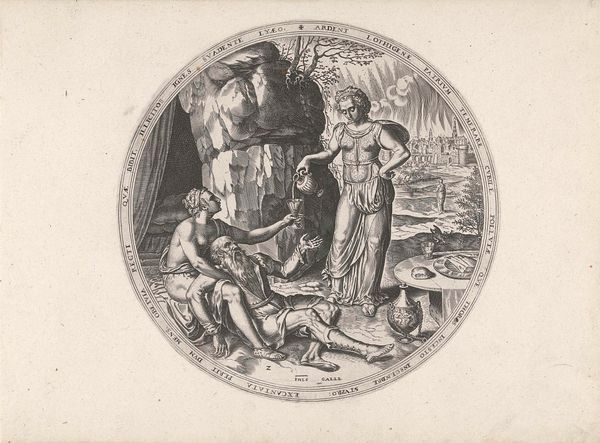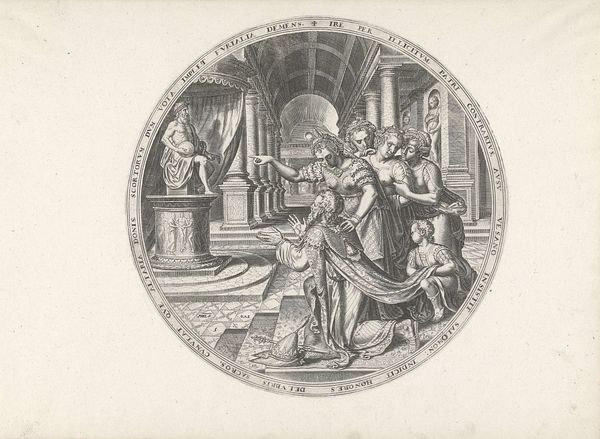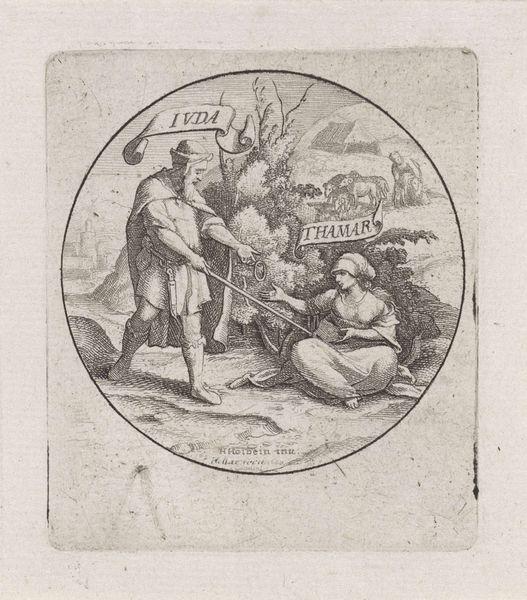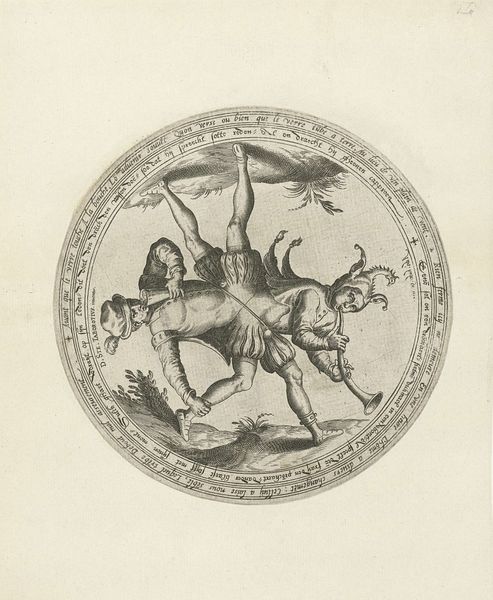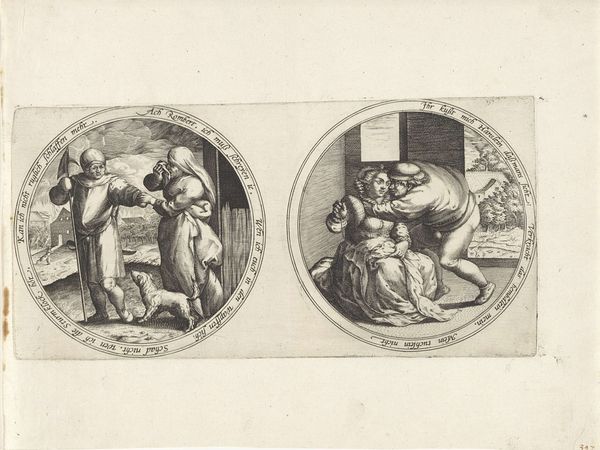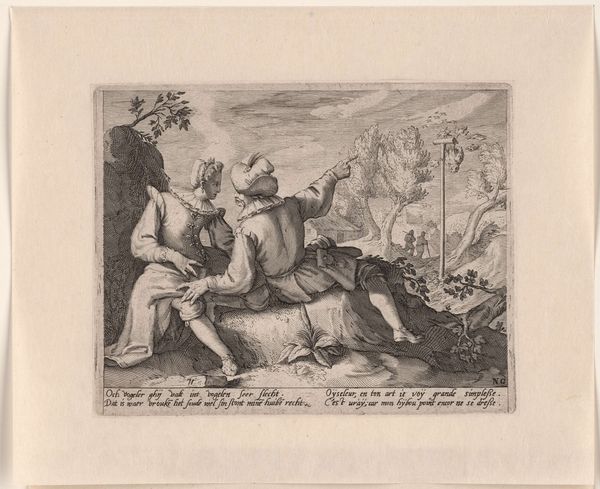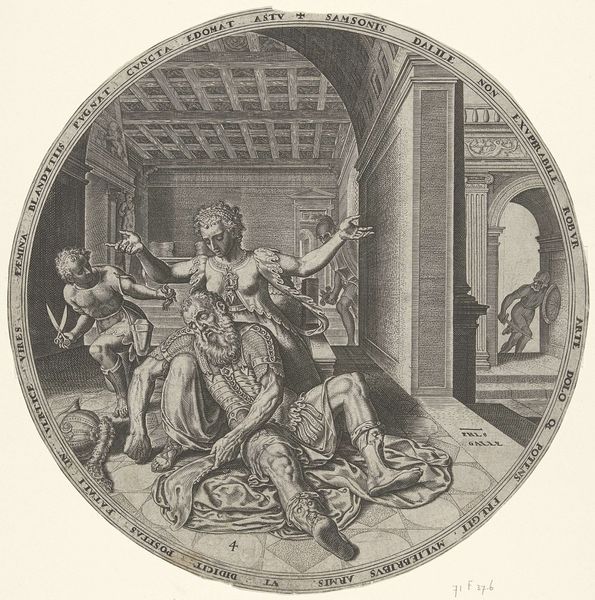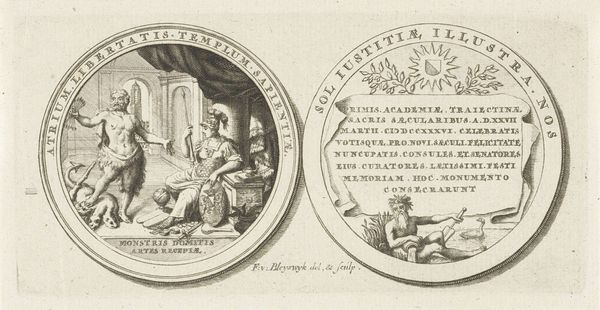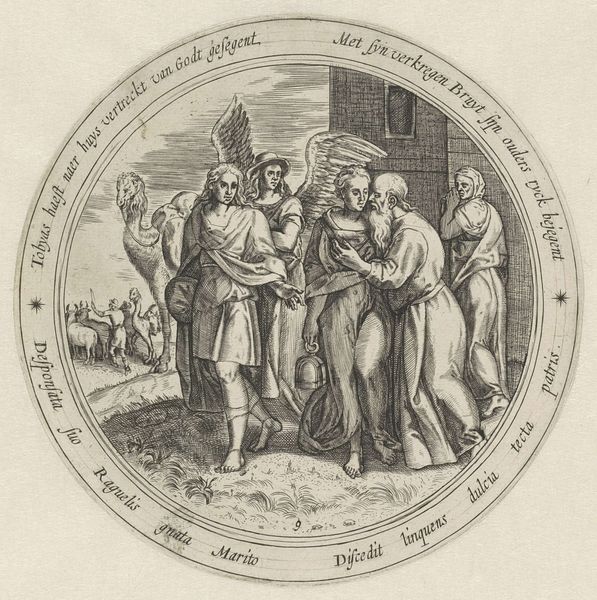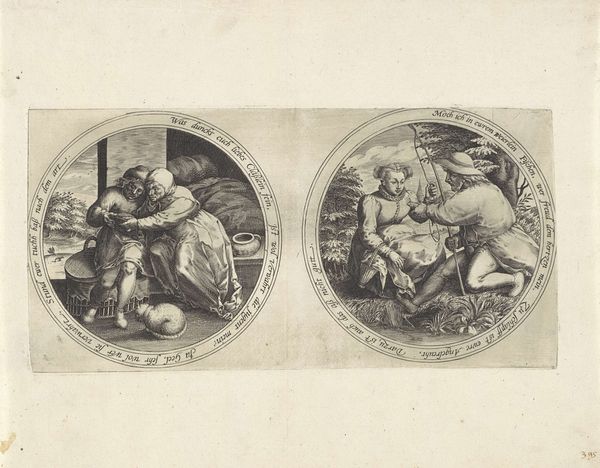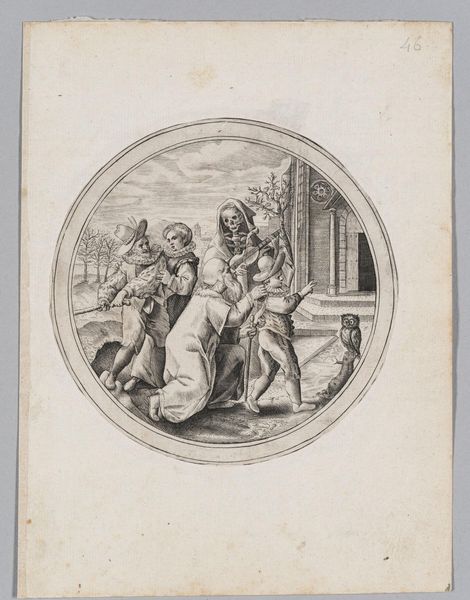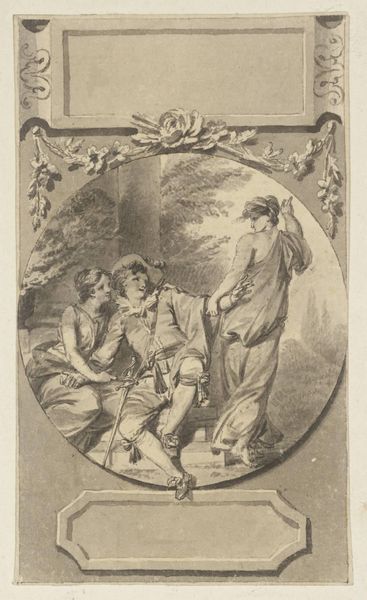
print, engraving
#
portrait
#
allegory
#
narrative-art
# print
#
old engraving style
#
mannerism
#
figuration
#
line
#
history-painting
#
engraving
Copyright: Rijks Museum: Open Domain
Curator: Here we have Philips Galle's engraving from around 1569, "Jaël vermoordt Sisera met een tentpin," or "Jaël Murdering Sisera with a Tent Peg." It's currently held in the Rijksmuseum. Editor: It's stark, and the composition—a circular frame containing this rather violent act—creates an immediate tension. There's a real contrast between the brutality of the central scene and the delicate detail of the engraving. Curator: Indeed. The image depicts a scene from the Book of Judges, a rather fascinating account in which Jaël, a woman, defeats Sisera, the commander of the Canaanite army, by driving a tent peg through his temple while he sleeps. This particular print employs the visual language of Mannerism. Editor: I find the emphasis on Jaël's agency particularly striking. It's easy to view biblical narratives like this through a patriarchal lens, focusing on male figures and power structures. However, here we see a woman taking decisive action, almost a symbol of resistance against oppression, defying conventional gender roles within a heavily militarized and patriarchal context. Curator: Certainly. Beyond the historical narrative, we also need to note that the choice of representing Jaël was often intended to stand for courage, perhaps even justice or, allegorically, prudence—qualities considered important. Jaël's story was a powerful symbol of divine intervention and triumph of the seemingly weak over the mighty. You see similar use of strong female figures from Judith to Salome. Editor: Precisely! Considering its era, Galle's interpretation provides a visual counterpoint, almost empowering, which deviates significantly from many contemporaneous portrayals. Even though we know it as biblical history today, then it was definitely a reflection and endorsement of challenging prevailing power structures, especially within religious orthodoxy and interpretations. Curator: It’s that layering of meanings, the convergence of cultural memory and artistic interpretation, that I find so compelling about these images. Galle’s interpretation has truly secured it within cultural consciousness. Editor: Absolutely. This work challenges us to look beyond simple narratives and to engage with complex questions of power, gender, and the interpretation of historical and religious stories. A story that may be shocking at first, it holds so much more, like feminine power in patriarchal history.
Comments
No comments
Be the first to comment and join the conversation on the ultimate creative platform.
